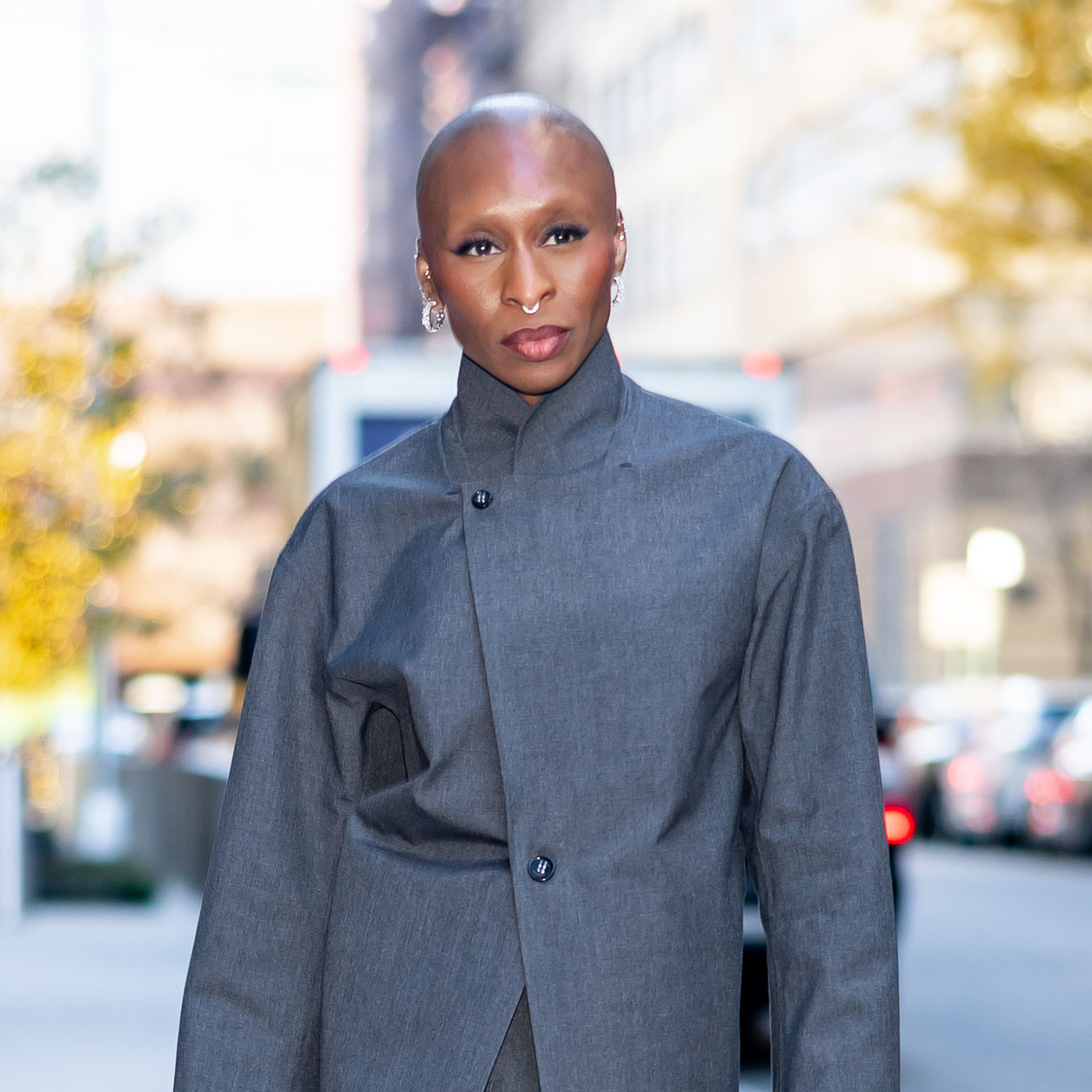Molly Baz on Getting Over Your Kitchen Fears and Her Prada Footwear Obsession

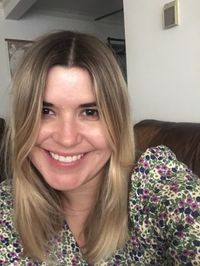
Welcome to Portrait Session, an intimate photo series and interview featuring some of our favorite people of the moment.
More Is More isn’t just the clever title of Molly Baz’s second New York Times best-selling cookbook. It’s a way of life for the recipe developer and food writer. From her seriously flavorful, crowd-pleasing dishes and beloved Molly-isms—"cea sal” is Caesar salad, "cotty c” is cottage cheese, "sandos” are sandwiches… you get the picture—down to her signature fashion aesthetic (think crop tops paired with wide-leg pants in punchy hues) and epic dinner parties, Baz never skimps on the bold and joyful. Also, she loves salt, like a lot, and isn’t afraid to admit it. It’s all part of Baz’s ever-growing appeal. She is out here showing us that cooking can be fun. Who doesn’t want to have fun?!
Before Baz, 35, moved to Los Angeles in 2020 and started her cooking empire—which now includes two cookbooks, a subscribers-only recipe club, a wine line named Drink This Wine, a super-fab Crate & Barrel collaboration, and over 740k Instagram followers—she worked as a line cook in Boston and New York City and later as a recipe tester for Epicurious. In 2018, she moved over to Bon Appétit, where she was the senior associate food editor and headlined her own video series, Making Perfect, for the magazine’s YouTube channel. She quickly gained a devoted following thanks to her bubbly demeanor and approachable recipes.
When Bon Appétit came under fire for pay inequity and racism, Baz left the publication and packed up her life, moving to East L.A., where she and her husband, spatial designer Ben Willett, and their wiener dog Tuna built a stylish new life for themselves. More Is More, according to Baz, is a reflection of her new life on the West Coast, which is a bright, cheerful ’round-the-clock party where the food has big personality and the drinks keep flowing.
Following her whirlwind book tour last month, we caught up with Baz to talk about graduating to cooking college with More Is More, the surprising kitchen items she always carries in her purse, and her Prada shoe obsession. Molly Baz, she’s like us.

Congrats on More Is More! To me, it felt like your first book, Cook This Book, was really teaching us the fundamentals, and More Is More is like, "Okay, now, let’s have some fun.” In your own words, how would you describe More Is More?
You pretty much nailed it. … [With] Cook This Book, you’re in elementary school. You’re learning how to cook. You’re learning the basics and the building blocks that are foundational and the important techniques in order to prepare you for the next book, More Is More, which is in your college. You’ve got it all under your belt, and now, you just party, basically. You still need to work hard because cooking is still work, but it can be a lot more fun, and you can loosen up a bit more and feel less stressed about the precision of the process because you’ve permitted yourself to do so.
The second book is really about cooking more with your own intuition and according to your own palette and your own kitchen and the way you want your food to taste. The recipes are still recipes, but the ask of the reader is [to] make sure it tastes good, and don’t stop until it does. If you don’t like a certain ingredient, swap it out for something else. Empower yourself to cook food that tastes really delicious to you and not in a stressful way. It’s a bit more improvisational and loosey-goosey.
What would you say makes a recipe a Molly Baz recipe?
I think it’s recognizable-ish dishes that get turned on their head in terms of flavor profile and the way they come together. That has always been the sweet spot for me. We all know and love steak au poivre. It’s a classic dish people have been making in France forever, but what is the Molly version of it? Well maybe it’s chicken au poivre, and we’re using chicken legs instead of steak, and we’re putting miso in the sauce and tarragon instead of the classic traditional ingredients because we’re a little bit less tied to tradition.
My recipes are not dogmatic in terms of being like, "This is the way things are supposed to be done,” and that’s what’s so exciting about cooking to me. … There’s so much in the world to draw inspiration from and so many ways to reinvent things. The exciting part of developing recipes for me is, How can we look at this beloved classic dish in a new way and breathe new life into it? That’s what I think is a successful Molly recipe.
As both a recipe developer and writer and a consumer of cookbooks yourself, what are the most important elements to you when writing a cookbook?
There are a lot of things. Number one, if there is not a picture for the recipe, people will not make it. So I will never write a cookbook with a recipe that doesn’t have a photo. It’s just a waste of everyone’s time, especially mine. Number two is the formatting of a recipe. What I think is really tricky about recipes is that there are just tons and tons of words on a page, and it’s really easy to get lost, and it’s hard to find where you were, and you have to jump back from being in the kitchen to finding your place on the page.
A lot of recipes assume a lot of the reader, and I try to remove all of those assumptions when writing recipes and writing books. That means organizing the ingredient list in a way that is efficient and makes sense in your kitchen. So I’m going to tell you everything you need to grab from your pantry and everything that you need to grab from your fridge all in one block in the recipe so you are not darting around the kitchen like a crazy person going to the fridge for milk and then going to the pantry for flour and then "Oh, I also need eggs—now, I’m back at the fridge.” It’s so inefficient, and it starts to get so much more chaotic.
Something that most recipe developers don’t do—and it drives me bonks—is not reiterating the ingredient quantity that is listed in the ingredient list in the recipe. It’s like, you know vaguely how much parm you need, but of course, you don’t have it memorized, and then you get down in the recipe, and it’s like, "Stir in the parm,” and you’re like, "How much parm?” You have to go back up to the top of the page and find the parm in the ingredient list. Why wouldn’t you as a recipe developer just say "stir in half a cup of parm” so they don’t have to do the work? So much of the formatting of my recipes has been thought through endlessly and tirelessly to remove any excess chaos that might enter the brain because it is my belief that extra noise makes cooking more stressful for a novice than a professional because there are more assumptions that they can just make, so they don’t have to read every word and reference every single ingredient. That’s what makes it not fun. Nobody is trying to not have fun. So let’s make it fun and not stressful.
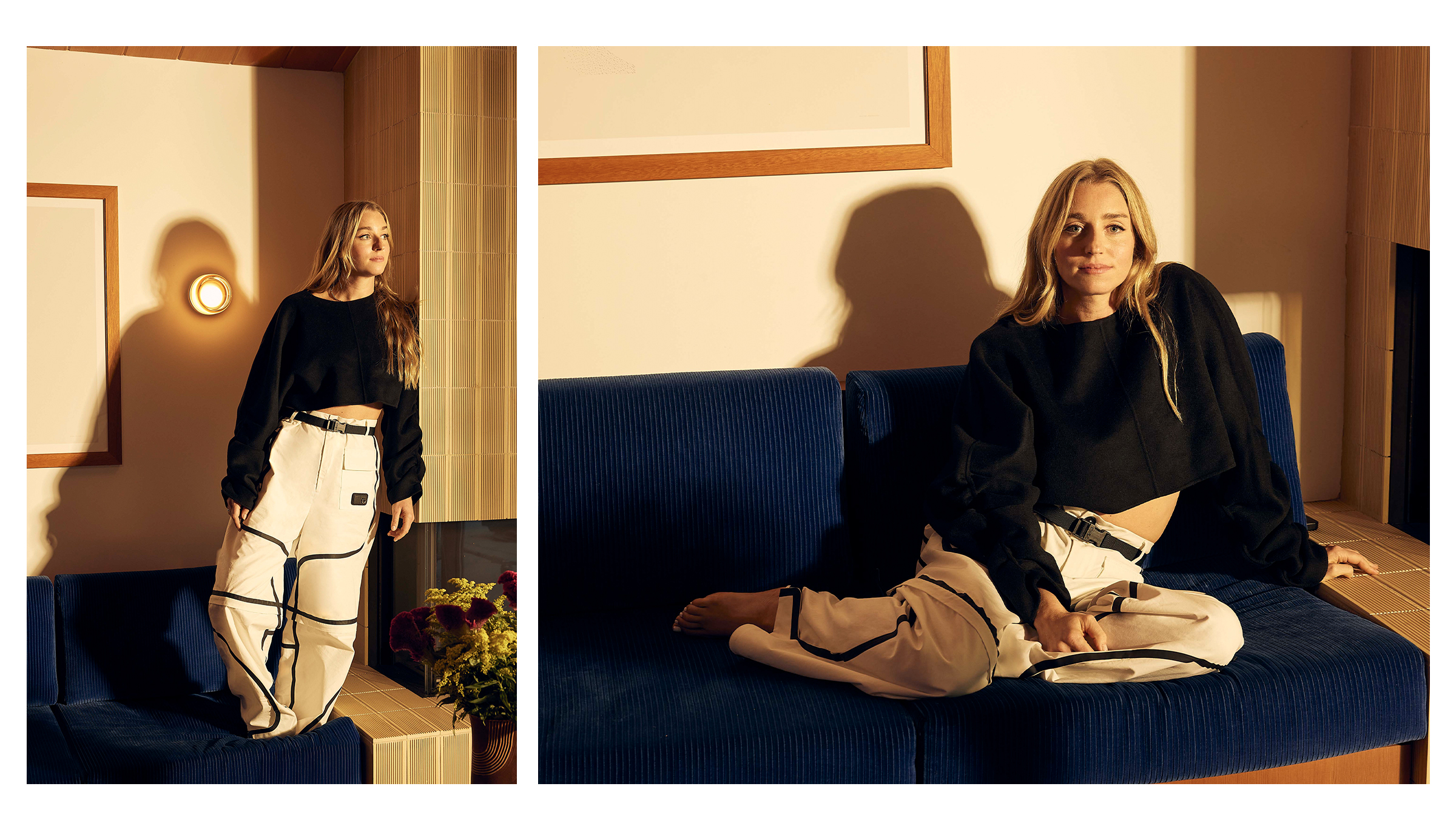
You have a really strong creative POV for both your brand and books. Can you tell me a little about the look and feel you want to create with your books and how it’s an extension of your cooking style?
My style, especially with cooking, has always been very bold and in your face—hopefully not in an obnoxious way, but in an "okay, I’m listening” way. I wanted the graphic design and the colorways of the book to reflect that and reflect the attitude of "We got this. We’re not pussyfooting around.” It’s also been very important to me that the look and feel of the cookbooks be very distinct from the others on the shelf. I think there’s a tendency to follow suit, make a white cover, use Times New Roman or Helvetica, format a recipe the same way, and I have always been like, "Let’s challenge that.” I think it’s totally okay to stop and have a big graphic moment that is nothing more than an illustration of me being like, "I love salt.” I do love salt, and it’s visual, and it’s art, and it makes you want to keep the book on a coffee table and show it off and not just feel like a reference book.
In terms of this book, More Is More, and how it differs from the first one, I moved to California right before I started writing this book, and I think it’s really a reflection of my aesthetic that I have built and created here in this house that we built and this world that we’re creating around ourselves, which is a "come one, come all” type of energy. I’m the entertaining house where there are always people here because nobody else likes to entertain, and/or maybe they’re like, "I don’t want to serve her.” But I hope that comes through the book as well. The whole book is shot at my house. My friends are speckled throughout. It is meant to feel like you are dropping into my life because cooking is such an integrated part of my world.
If I’m a novice in the kitchen but I really want to impress my friends, what recipe from More Is More do you recommend?
The Miso-Braised Chicken and Leeks sounds fancy but is deceptively simple. You literally sear chicken legs, add some leeks, some miso, some butter, and let it cook for 45 minutes in sake, and the broth that comes out of it and the melting leeks are so tender and flavorful and delicious. So that’s a great dinner-party move, I think, because it’s a little bit elevated.
Another one I tell everyone to make because I feel it’s in the spirit of "more is more” and it’s one step more than a classic pasta dish is the Crispy Orecchiette With Sausage and Collard Ragù. It’s basically spicy Italian sausage with some chiles and aromatics with greens cooked down into a very quick ragù, like a 15-minute type of situation. Before you add the orecchiette, once it’s been boiled, you add it to a nonstick skillet with a little bit of olive oil, and you fry the orecchiette so the edges get crispy and browned, and the interior stays chewy and al dente, and it’s just a way more interesting multi-textural eating experience by just having spent three or four extra minutes crisping up the pasta. That, I think, is a bit of a showstopper because it’s like … you made pasta for dinner, but then it’s like, "Whoa, why is this pasta crunchy and crispy?” It’s got all of this stuff going on, and then right at the end, you open up a ball of burrata, which is always a crowd-pleaser.
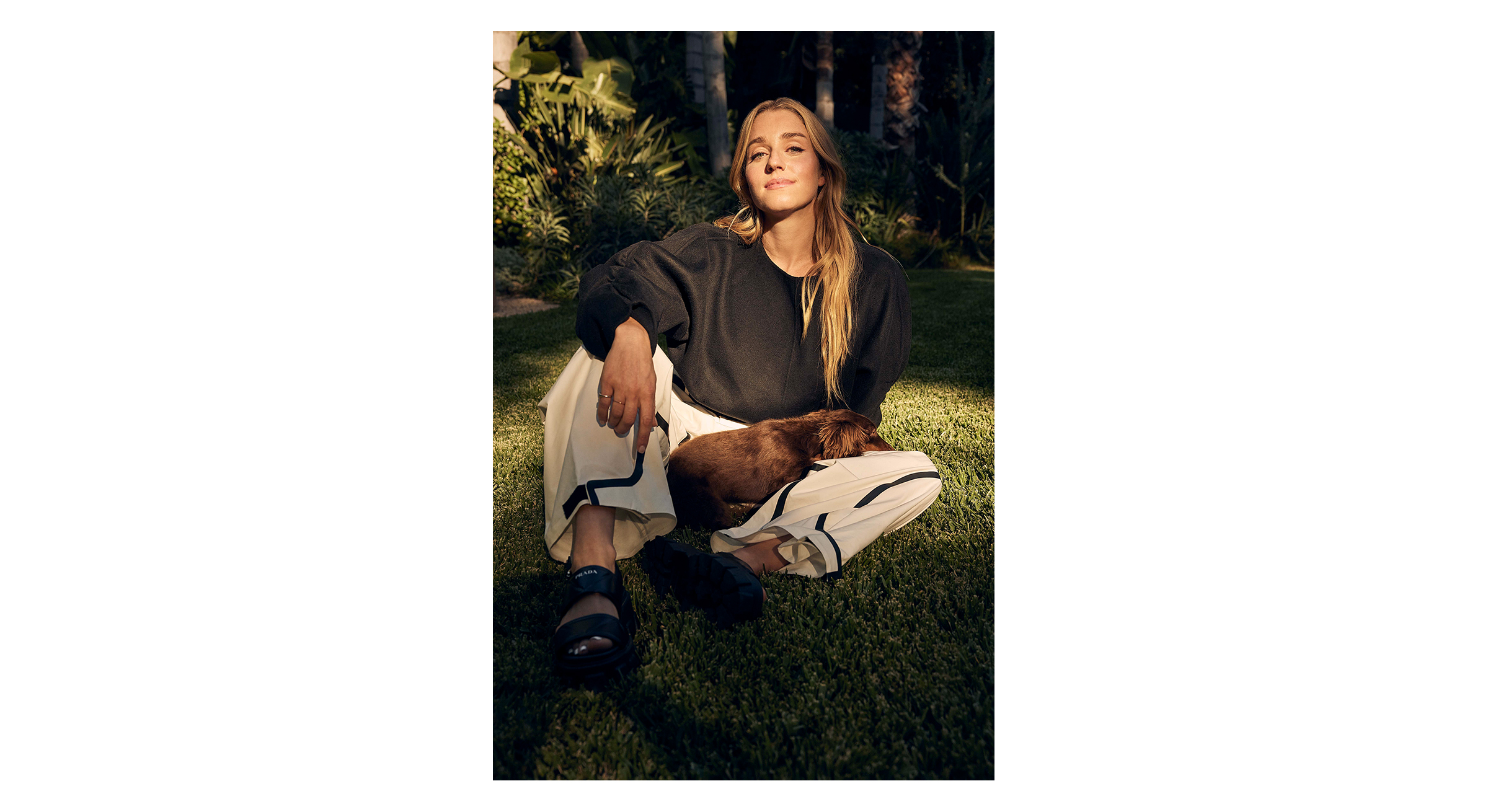
What’s a common mistake you see a lot of friends, or people in general, make in the kitchen?
A fear of taking things all the way. There is such a fear of just going for it and going to the nth degree, and that, I think, separates a novice cook from a pro in terms of the way they cook. I go in there with my hands, and I’m adding splashes and glugs and cranking the heat up. I’m cooking with gumption and without fear of overdoing it. The fear of overdoing it is what holds people back from really achieving robust, flavorful food. I would rather a home cook overdo it once or twice in service of learning just how far beyond that threshold they can go.
Describe your perfect food day.
Wake up, I have a pistachio-milk cappuccino. I recently converted to pistachio milk, which is so bougie, but I recently found it at a discount, like 50% off—this is such a non sequitur—at a Barista Underground, which is a coffee house where you can buy in bulk. I have like 48 cartons of pistachio milk in my garage because it makes them affordable. I normally don’t eat breakfast, and that is because I really enjoy the feeling of being hungry and then being so excited to eat something. I’m never quite that hungry in the morning, especially after a cappuccino. If I eat breakfast, I never build up that ferocious appetite that makes me excited to eat.
I would probably skip breakfast unless it was my last meal on Earth. … Okay, fuck it—I’ll just eat everything. Then I would probably eat a cold tuna fish sandwich with pickles and a big wedge of iceberg on brioche or sourdough or something. I am just obsessed with tuna fish; it’s the thing I crave the most in the world. Then dinner would be a long, drawn-out dinner party at my house. I would probably make rotisserie chickens, which is in the book. I have a rotisserie built into my cabinet in the kitchen. I would brine them the day before and then throw them on the rotisserie with some potatoes underneath. Then I would probably bust out a deep fryer and make some french fries just so I could have every which way of potato. [I’d] have my Caesar-salad moment at dinner and a raw-bar situation always—a seafood tower probably—to kick it off.
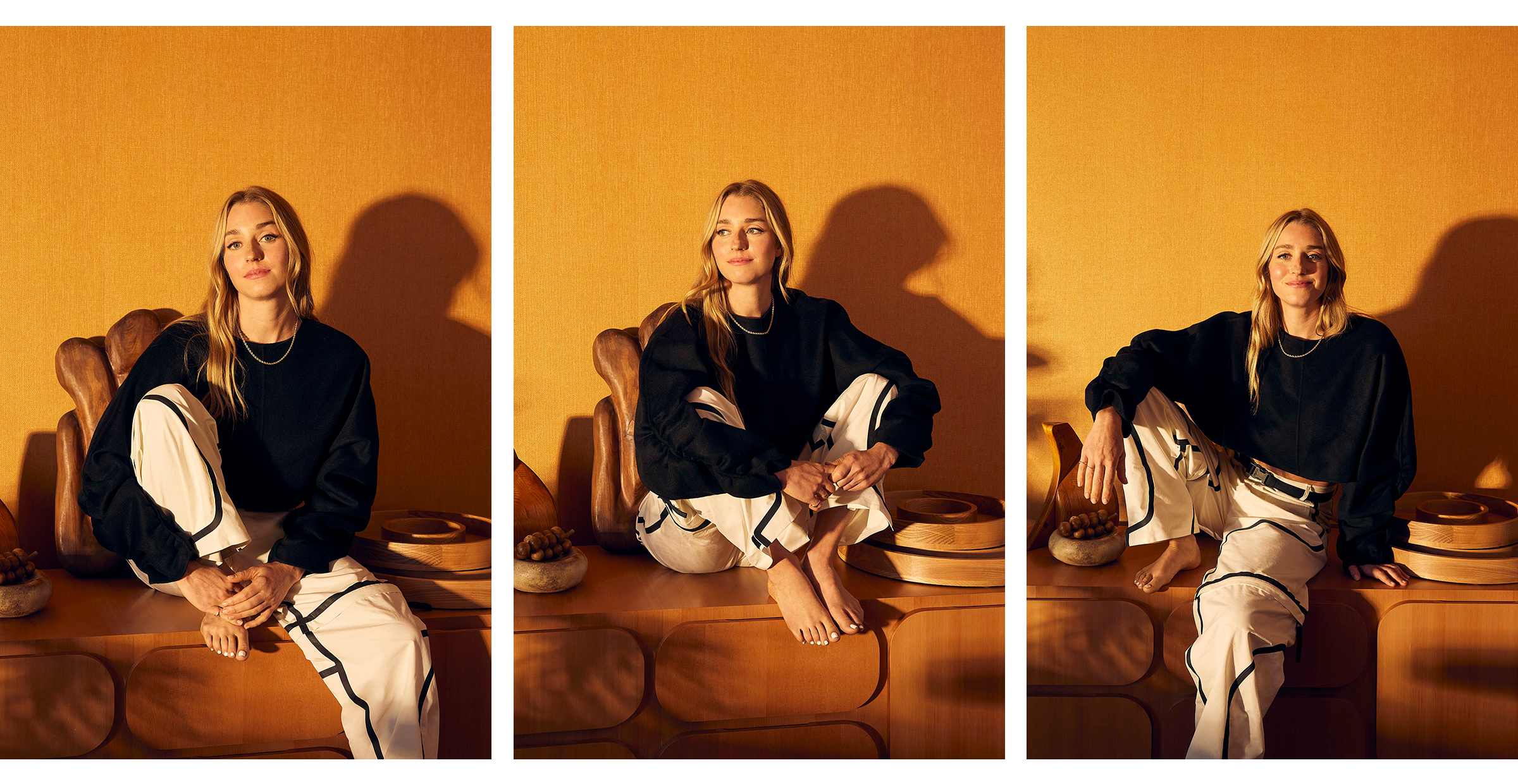
Beyoncé carries hot sauce in her bag, but you apparently carry a tiny tin of Maldon flaky salt. Why salt, and are there any other kitchen items you carry in your bag?
It’s funny. Yesterday, I went to the farmers market, and we normally get dips and chips, and we’ll get vegetables, and there’s a rotisserie-chicken guy there where you can get just a hot rotisserie chicken, and we just eat at the farmers market. I packed my tin of Maldon salt and a little ziplock baggie of lemon wedges because I feel like there is just never enough acid, and I always want a squeeze of lemon on my chicken and potatoes that roast underneath it. So if I could—it’s not always doable depending on how long I’m out—a little baggy of lemons, a tin of Maldon salt, and I was just saying yesterday, Why does no one make single-use olive oil bottles? I would carry around extra-virgin olive oil … if I could.
One of the rules in the beginning of More Is More is called "You’re probably not using enough,” and I list out the five ingredients that people don’t use enough of but should be using more of, and it’s salt, lemons, olive oil, acid, and herbs. So if I could, and when I can, I have olive oil, I have lemons, and I have salt with me because pretty much anything can be made more delicious by adding one of those things. If it’s dry, add olive oil, which adds mouthfeel and lusciousness. If it’s fatty and dull, add lemon juice and brighten it up. And if it’s underseasoned, reseason it.
Can we talk about the bag you are currently wearing that holds all of these items?
Right now, I just got a new leather COS purse that I’m loving. It’s a puffy, dappled black leather purse that is mid-size and perfect for all the things that need to go in a purse but not enormous. So it’s either a leather bag or a tote. I carry a lot of totes because I’m always grocery shopping and going to farmers markets, so lately, I’ve been carrying around my seafood-tower tote, which is a piece of merch we just dropped and has a seafood tower on it and makes me very happy.
What would you say is the recipe for a Molly Baz signature outfit?
I would say it’s a big, wide-leg baggy pant with a tight waist and then some kind of a patterny, colorful crop top. A crop top that hangs over the edge of a slimmer waist and a big flare pant is my signature silhouette. And then I have a big collection of Prada shoes, which I’m pretty obsessed with and is my splurge. So I will wear a Prada platform sandal or Prada loafer pretty much at all times. That’s how I spend my money—on shoes.
Everyone at Who What Wear has a Prada footwear obsession right now.
Good, so I’m in good company. It sounds so obnoxious, but they make some of the best shoes—I’m sorry to say.
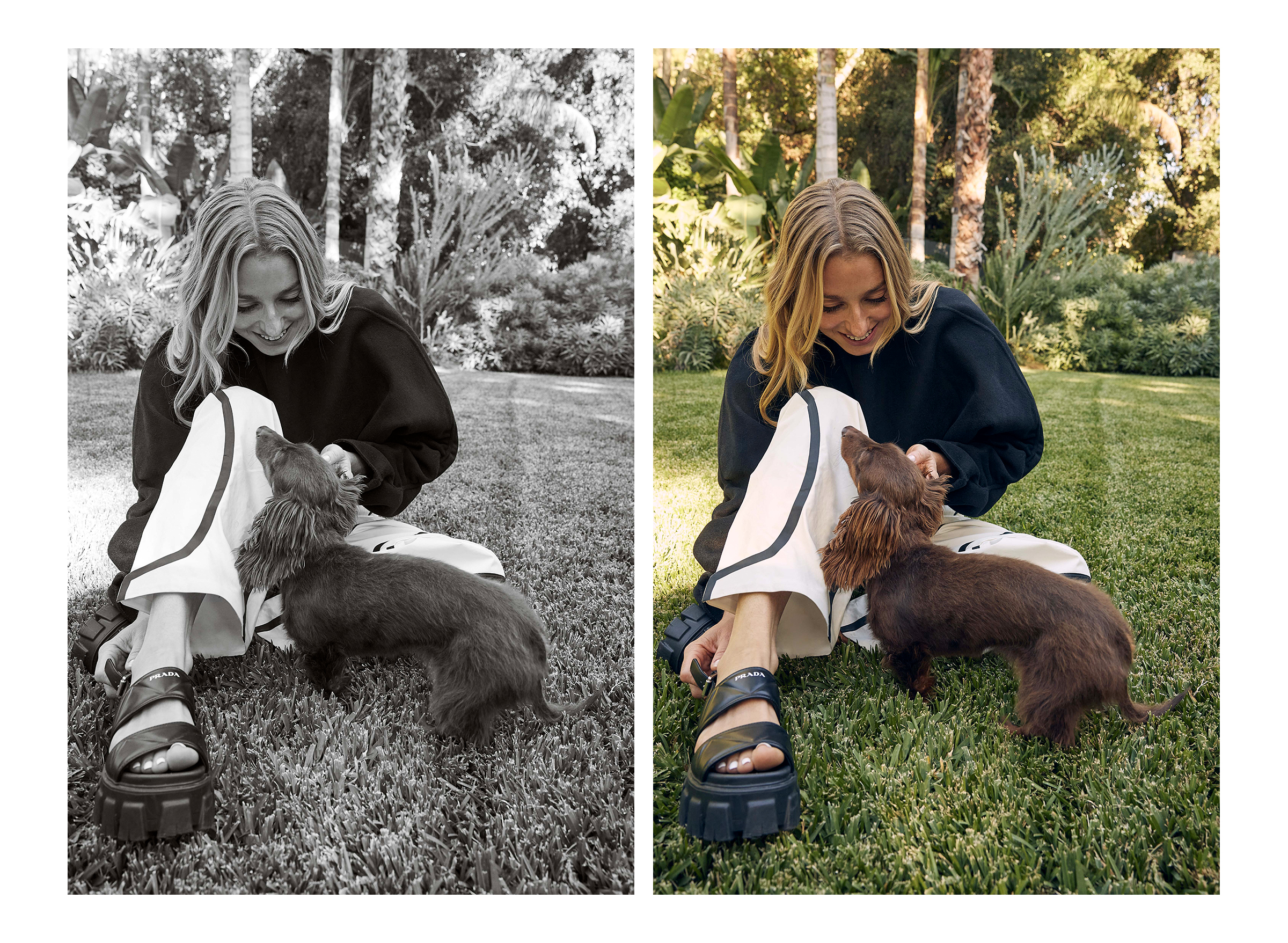
We’re heading into holiday-party season, and I know you’re always trying to throw a party. In your opinion, what is the best outfit when hosting a dinner party?
I would wear a work-ish pant, like a black denim jean or something that is versatile, and then some kind of a silky patterned button-down shirt. And then you go to ShopMollyBaz.com, and you buy the apron, and that’s how you color-match it with your outfit. I have aprons in maybe 17 different colors, so there is always something that feels like it’s part of the look versus "Why is she wearing an orange-and-pink apron on top of this whatever look?” So it’s about being able to choose your apron rather than your outfit, I think.
Are there any other party-hosting tips you have for our readers?
There’s the classic, which people always say, to prep ahead, which I definitely do and stand by. Just get it out of the way so you can enjoy. But the other thing I always recommend is to just get people drunk. As soon as they walk in the door, you’re pouring them cocktails. You’re offering them wine, and everyone’s starting to have a good time, and they don’t notice if things take a little longer or if you’re low-key stressing out over the chicken or your skin doesn’t brown because they are getting sauced, and it’s going to be a night. And that has been the key. I’ve had dinner parties where I’ve been… Well, that food wasn’t really good, but nobody noticed because I was like, "Who wants another martini?!” And that’s how you entertain. Keep them well hydrated.
Get your copy of More Is More today!
Photographer: Sami Drasin at Walter Schupfer Management
Hairstylist: Eddie Cook at Forward Artists
Makeup Artist: Michelle Mungcal at Art Department
Art Director: Amy Armani
Director of Production: Samantha Rockman
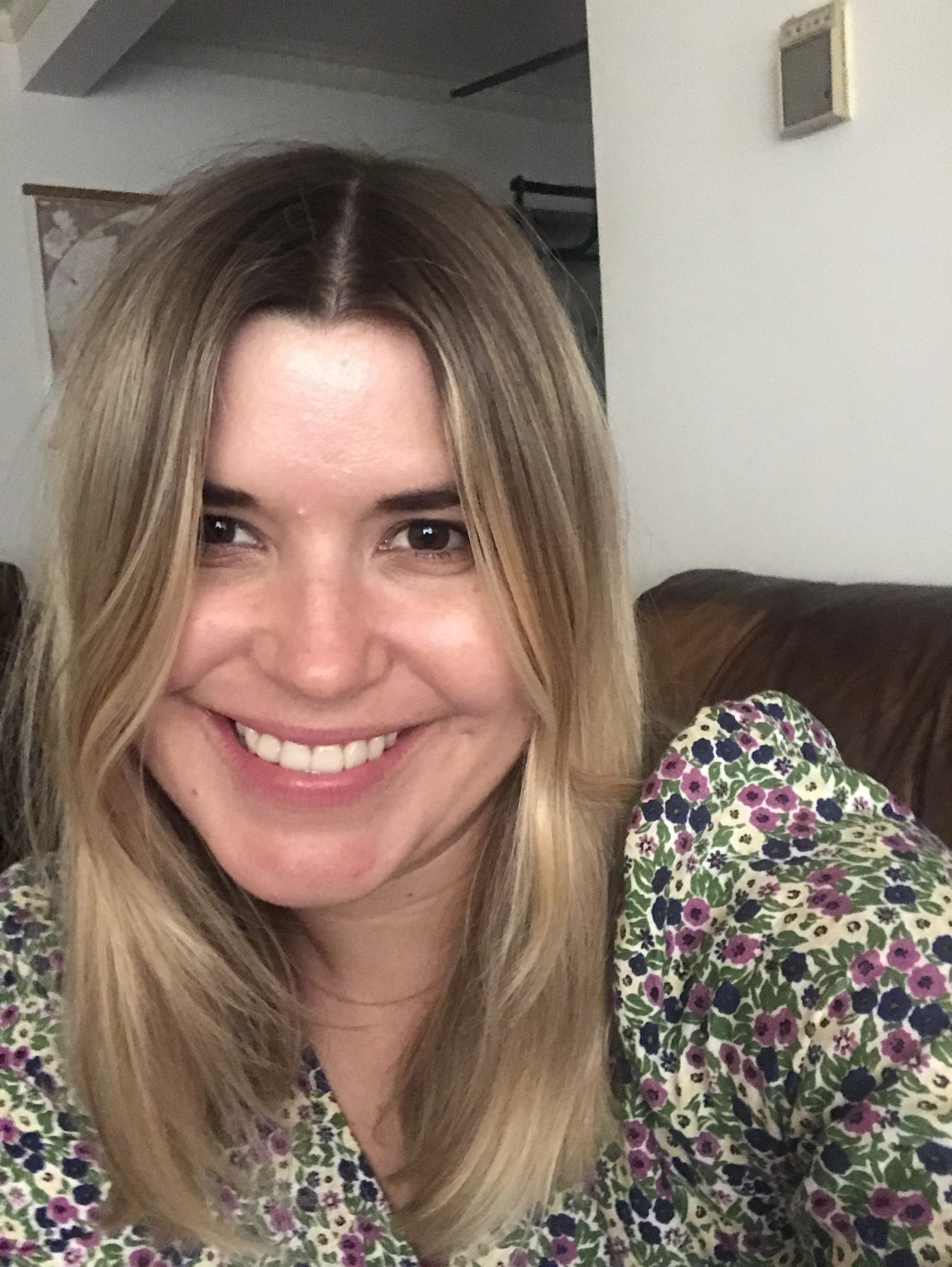
Jessica Baker is Who What Wear’s Executive Director, Entertainment, where she ideates, books, writes, and edits celebrity and entertainment features.
-
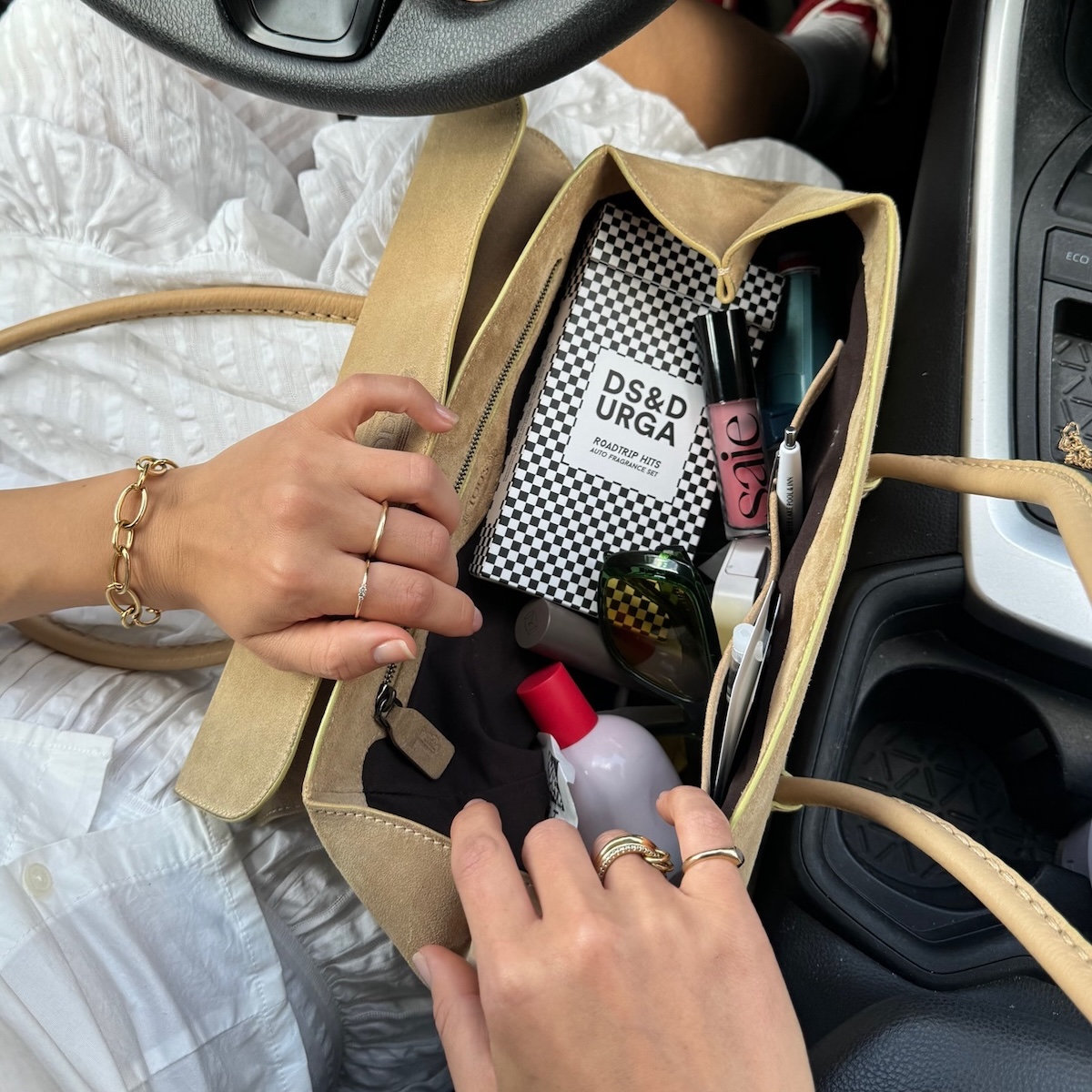 Found: The Chic Designer Hand Cream Every Fashion Person Will Keep in Their Bag This Fall
Found: The Chic Designer Hand Cream Every Fashion Person Will Keep in Their Bag This FallHand me my Prada!
-
 Actress Selma Blair on Legally Blonde Beauty Malfunctions, Jackie O Bangs, and Her Goldilocks Skin Savior
Actress Selma Blair on Legally Blonde Beauty Malfunctions, Jackie O Bangs, and Her Goldilocks Skin Savior"My skin, once upon a time, was a mess."
-
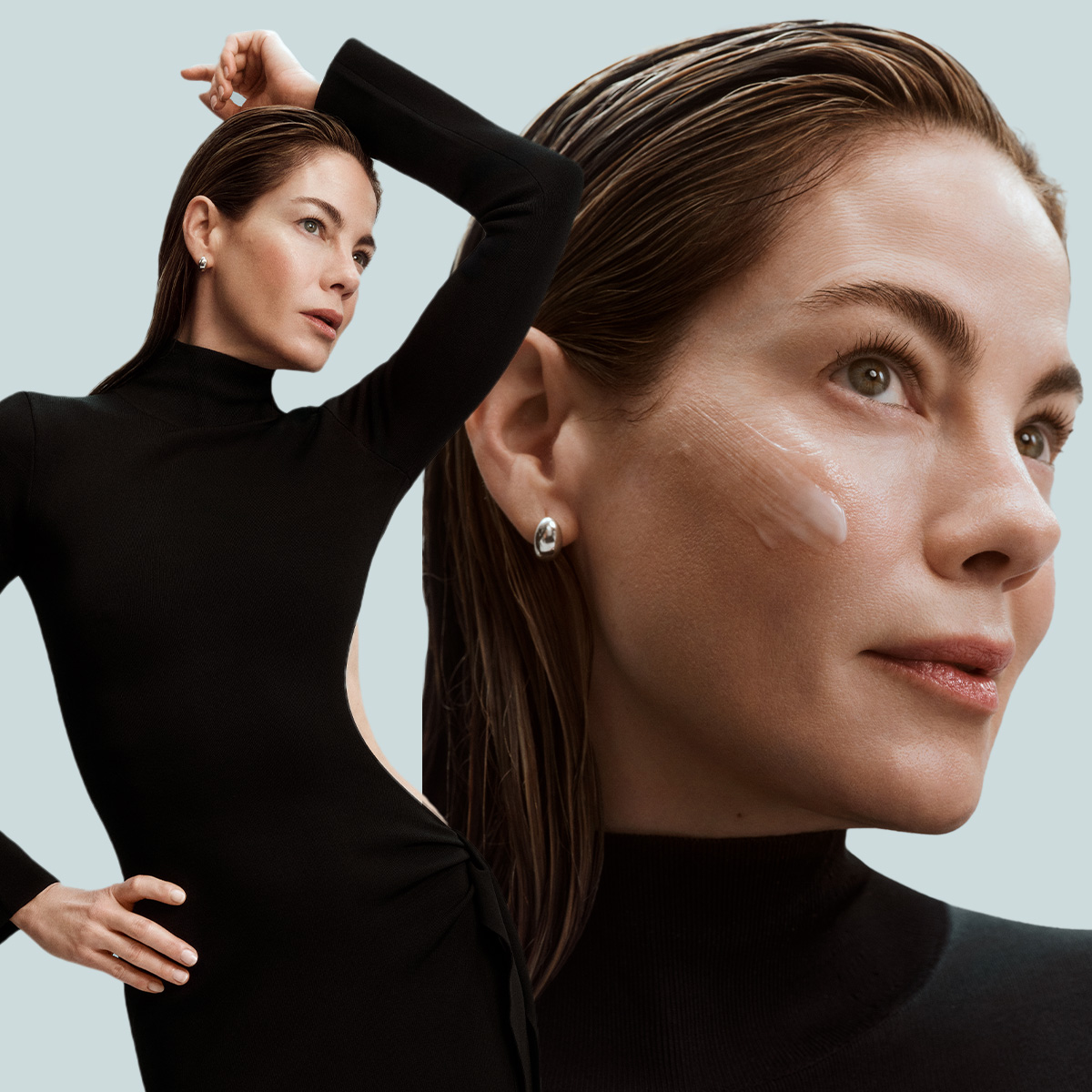 Michelle Monaghan Discovered This Skin-Perfecting Product Combo on the Set of The White Lotus
Michelle Monaghan Discovered This Skin-Perfecting Product Combo on the Set of The White LotusPlus, she never travels without these key items.
-
 I Sleuthed This BTS Shot From The Summer I Turned Pretty—10 Belly-Approved Beauty Products
I Sleuthed This BTS Shot From The Summer I Turned Pretty—10 Belly-Approved Beauty ProductsFrom an iconic lip balm to a drugstore serum.
-
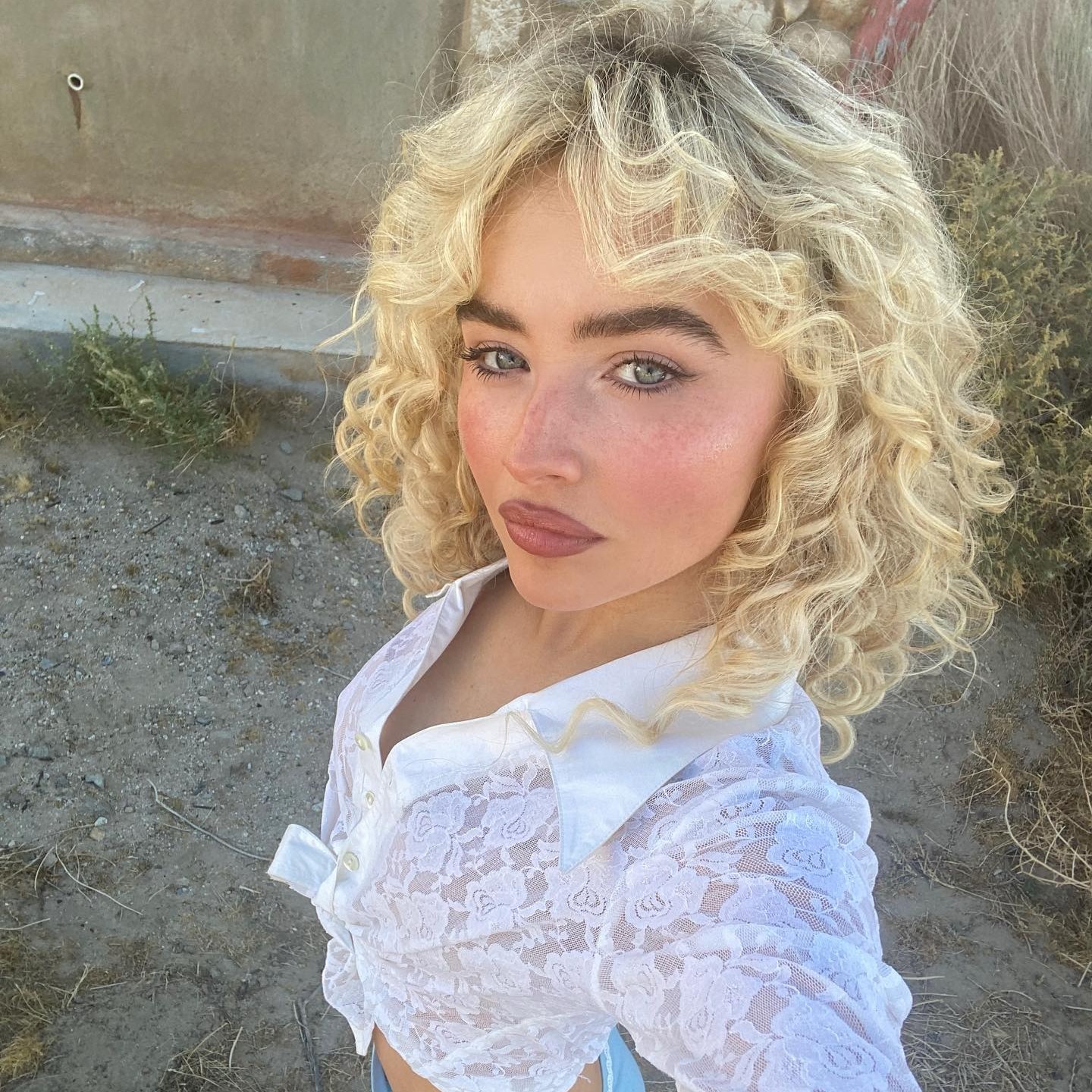 Exclusive: Sabrina Carpenter Wore This Soon-to-Be-Viral Prada Lip Balm in Her "Manchild" Music Video
Exclusive: Sabrina Carpenter Wore This Soon-to-Be-Viral Prada Lip Balm in Her "Manchild" Music VideoRemember the sneaky reference?
-
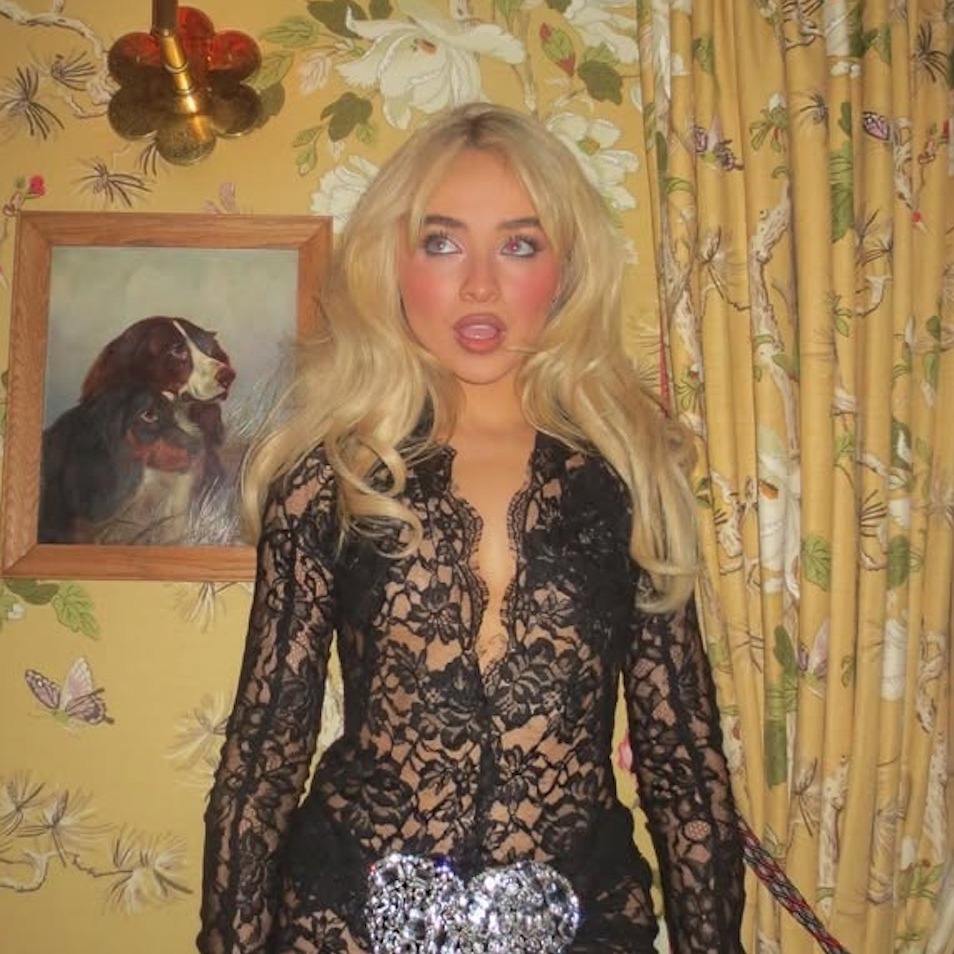 Celebs Like Sabrina Carpenter and Bella Hadid Swear By These Chic Prada Beauty Staples
Celebs Like Sabrina Carpenter and Bella Hadid Swear By These Chic Prada Beauty StaplesA celeb-approved shopping list.
-
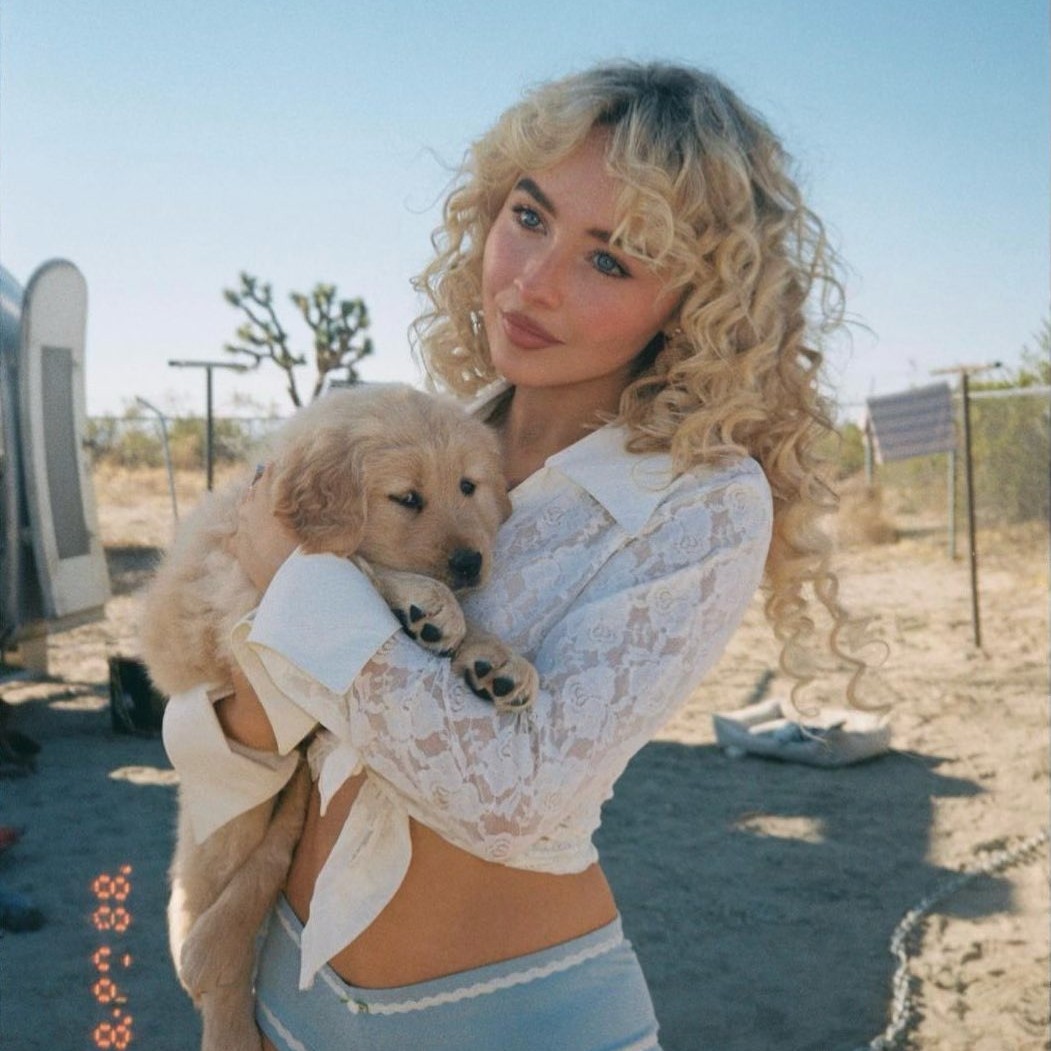 Sabrina Carpenter Just Fed Us the Song of the Summer (and a Mysterious Prada Lip Product)
Sabrina Carpenter Just Fed Us the Song of the Summer (and a Mysterious Prada Lip Product)Exclusive details lie ahead.
-
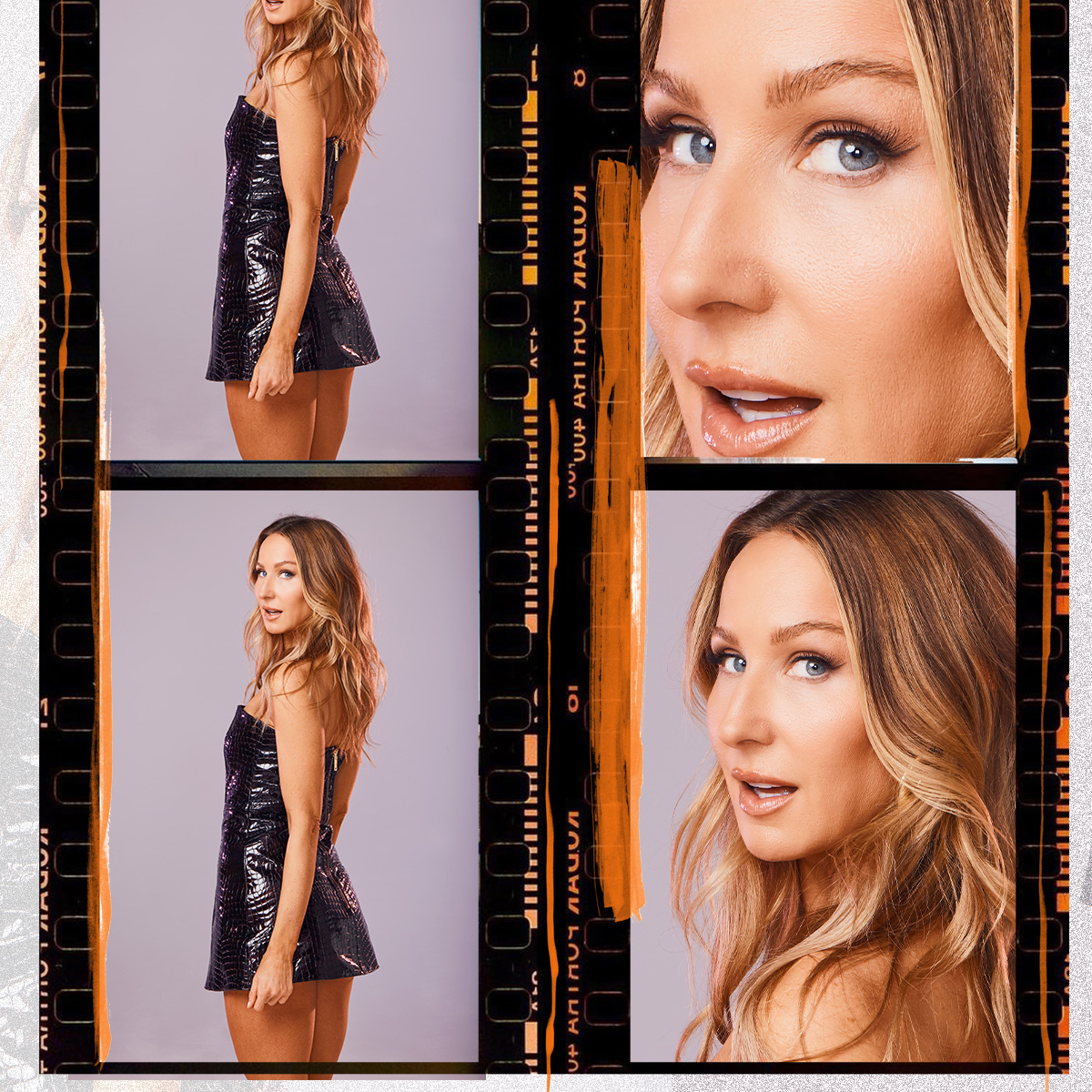 Nikki Glaser's 3 No-Fail Tricks for an Instant Glow-Up—Plus, Why It Pays to Be a Try-Hard
Nikki Glaser's 3 No-Fail Tricks for an Instant Glow-Up—Plus, Why It Pays to Be a Try-HardThe comedian talks "recession blonde," color analysis tests, and desert-island tour products.
